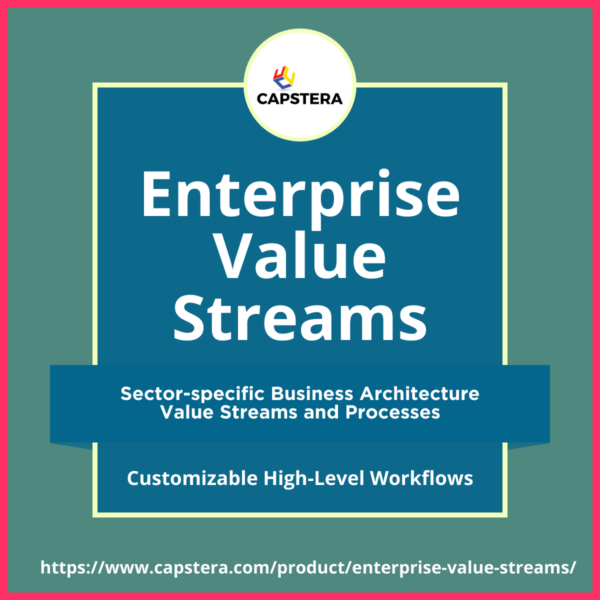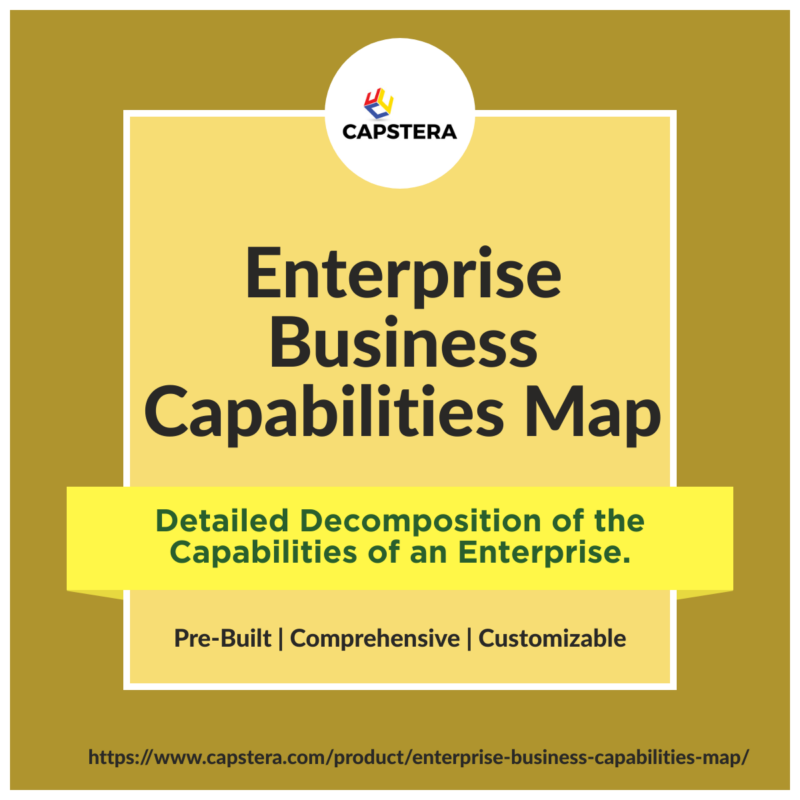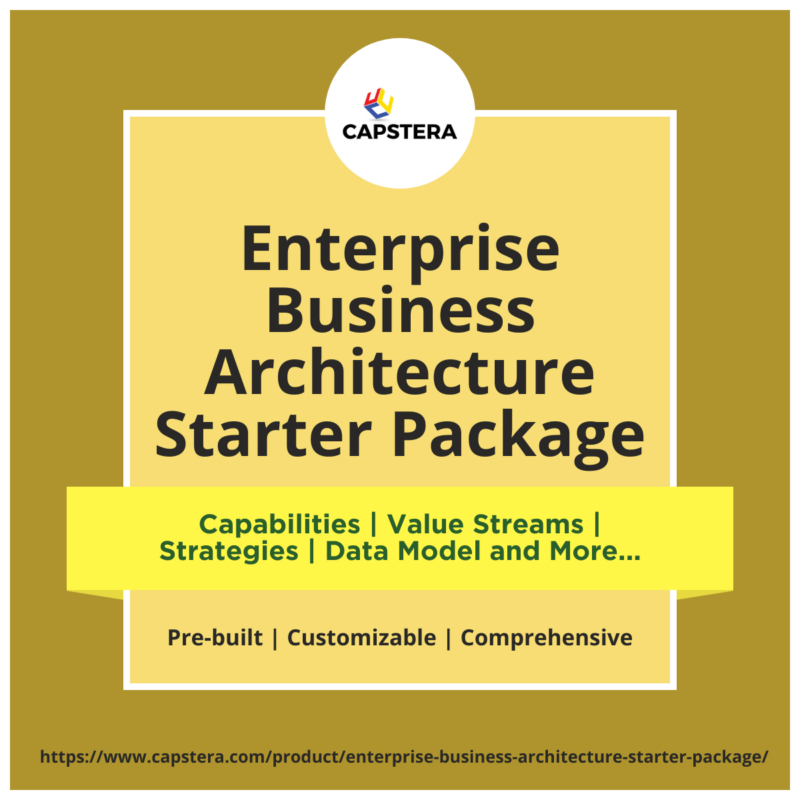
The ultimate guide to Enterprise Architecture as Strategy is an in-depth exploration of the topic with actionable recommendations.
Enterprise Architecture (EA) represents the foundational structure and behavior of an organization’s processes, information systems, personnel, and organizational sub-units. It aligns these elements with the organization’s core goals and strategic direction. At its heart, EA enables businesses to translate their mission and vision into successful execution by creating a clear organizational design and decision-making framework.
The Connection between EA and Business Strategy
The connection between Enterprise Architecture and business strategy goes beyond simple alignment; it’s a symbiotic relationship that enables the realization of strategic initiatives. By aligning technology with business goals, EA ensures that investments in IT and other resources produce tangible business benefits. It’s a roadmap, bridging the gap between current operations and future aspirations, and facilitates seamless communication between different levels of the organization.
For instance, in launching a new product, a well-designed EA helps ensure that IT systems, organizational structures, and processes all work together to support the new initiative. The effectiveness of EA in this scenario results in faster time-to-market, optimized resources, and a better understanding of risks and dependencies.
The Imperative for Enterprise Architecture as Strategy
In today’s complex and rapidly changing business landscape, using Enterprise Architecture as a strategy becomes an imperative rather than an option. It helps organizations anticipate, adapt, and respond to changes both within the industry and the broader economic environment.
The business ecosystem has become increasingly intricate with the rise of digital transformation, cloud computing, big data, and other technological advancements. Here, EA plays a pivotal role in decoding complexity, identifying opportunities, and creating a resilient framework that can flex with change.
Moreover, the alignment of EA with strategy fosters innovation by creating an environment where new ideas can flourish within the constraints of organizational capabilities and market realities. It promotes efficiency and reduces redundancy by ensuring that every part of the organization is working towards the same goals. The critical integration between EA and business strategy not only supports tactical decisions but shapes the very direction and future of the organization.
Enterprise Architecture is not merely a set of guidelines or an IT-centric task. A strategic imperative binds the organizational fabric, steering it toward its desired future state. The alignment of EA with business strategy is essential for ensuring agility, innovation, and sustained growth in an increasingly competitive and dynamic marketplace.
Introduction to Enterprise Architecture
Definition and Purpose of EA
Enterprise Architecture (EA) is a strategic planning process that defines the structure and operation of an organization. It aligns business strategy with information technology, enabling the company to meet its objectives effectively. The primary purpose of EA is to ensure that business processes, information systems, and organizational goals work in harmony. It helps optimize fragmented processes and technology within an organization, creating a clear roadmap for growth, innovation, and adaptive change.
History and Evolution
 The concept of Enterprise Architecture emerged during the 1960s with the rise of information system design methodologies. However, in the late 1980s, John A. Zachman laid down a formal framework known as the Zachman Framework, which truly ignited the field.
The concept of Enterprise Architecture emerged during the 1960s with the rise of information system design methodologies. However, in the late 1980s, John A. Zachman laid down a formal framework known as the Zachman Framework, which truly ignited the field.
Initially focused on IT alignment, EA has evolved into a broader strategic tool encompassing various aspects of business operations. Over time, it expanded to include processes, strategies, governance, and organizational structure. The rise of digital technologies, globalization, and an increased emphasis on customer-centric models further fueled its growth and transformation.
From a technical discipline to a holistic approach guiding entire business ecosystems, the evolution of EA reflects the complex, ever-changing nature of modern organizations.
Components and Frameworks
Several components make up Enterprise Architecture, including:
- Business Architecture: Defines the organization’s business strategy, governance, and key business processes.
- Data Architecture: Details how data is collected, stored, accessed, and used within the organization.
- Application Architecture: Describes the interactions between different applications and software platforms.
- Technology Architecture: Outlines the hardware, OS, and network infrastructure.
Various frameworks guide the creation and implementation of EA. Among them:
- The Open Group Architecture Framework (TOGAF): TOGAF provides a step-by-step approach to developing Enterprise Architecture and is widely recognized for its standardization and comprehensive methodology.
- Zachman Framework: This framework organizes architectural artifacts in a two-dimensional classification system. It helps in understanding how different stakeholders, such as business owners, developers, and project managers, view specific aspects of the organization.
- Federal Enterprise Architecture Framework (FEAF): Primarily used in government sectors, FEAF supports a shared services model and enables cross-agency collaboration.
Each framework offers unique approaches and tools for aligning business goals and technical capabilities, shaping the organizational structure, and building a more resilient and responsive business model.
Enterprise Architecture is a blueprint that aligns every aspect of an organization’s operation with its strategic objectives. Its history is a testament to the adaptability and innovation that defines the field. Various components and frameworks of EA offer structured methodologies to realize the ultimate goal of unifying and guiding the organization toward sustainable success.
Enterprise Architecture as Strategy: Why it Matters
Aligning Business and IT
Enterprise Architecture (EA) is vital in aligning business objectives with IT capabilities. Technology forms the backbone of most organizational functions in today’s interconnected world. Organizations risk falling into a disjointed and inefficient pattern without clear alignment between business goals and IT resources.
EA helps in mapping out business strategies and linking them to IT initiatives. This linkage ensures that technology investments directly support the business’s overall direction, leading to an optimized and focused approach. It allows for coherent decision-making where every technological advancement or change resonates with the company’s core objectives. In turn, this alignment fosters a responsive, streamlined, and effective operation that is better positioned to compete in the market.
Facilitating Organizational Change
Whether driven by internal dynamics or external forces such as market shifts, organizational change can be disruptive and challenging. EA is a strategic enabler in these situations by providing a clear framework to guide and support change.
With a well-defined architecture, an organization has a complete view of its current state, including processes, systems, and relationships. This insight helps leaders identify areas of potential improvement, potential risks, and the paths to reach desired future states. By illustrating the interdependencies within the organization, EA enables a more calculated and controlled approach to change, minimizing resistance and friction.
Reducing Complexity and Increasing Efficiency
Modern organizations are complex entities; without proper guidance, this complexity can lead to inefficiency, confusion, and waste. EA provides a structured approach to identify redundancies, streamline processes, and optimize resource allocation.
By building a coherent view of the organization’s structure and processes, EA allows leaders to see where simplification and consolidation are possible. It helps in creating standardized solutions and practices that eliminate unnecessary variations and inconsistencies. The result is a more streamlined, efficient, and responsive organization that can deliver its products or services with greater agility and lower costs.
Enabling Innovation and Agility
Innovation and agility have become cornerstones for success in today’s rapidly evolving business environment. EA supports these critical aspects by creating a flexible framework that can adapt to change while fostering a culture of innovation.
Through EA, an organization can build a robust yet flexible structure that allows quick responses to market opportunities or threats. It helps identify and leverage new technologies, facilitates cross-departmental collaboration, and breaks down silos that can stifle innovation. A clear understanding of current capabilities and future objectives ensures that innovation aligns with the strategic goals and adds value to the organization.
Moreover, the agility fostered by a well-designed EA empowers the organization to pivot quickly when necessary, embracing change rather than resisting it and staying ahead of competitors.
Enterprise Architecture is not merely a planning tool or an IT function; it’s a strategic imperative that influences almost every aspect of modern organizations. By aligning business and IT, facilitating organizational change, reducing complexity, and enabling innovation and agility, EA provides a holistic approach that guides an organization toward success in an increasingly complex and dynamic marketplace. Its role as a strategic enabler underscores its importance and relevance in shaping organizations that are resilient, efficient, innovative, and poised for continual growth. Hence, it is critical to consider Enterprise Architecture as Strategy.
Enterprise Architecture Models and Approaches
 Model-Driven Architecture
Model-Driven Architecture
Model-Driven Architecture (MDA) is an approach to software design and development that emphasizes the use of models to define system functionality. Rather than focusing solely on code, MDA prioritizes the creation of abstract representations that describe different aspects of the system.
- Design Flexibility: MDA separates business logic from the underlying technology, allowing changes to one without impacting the other.
- Interoperability: By using standardized models, MDA ensures that various parts of the system can work together smoothly, regardless of the technology used.
- Scalability: The approach enables incremental development, allowing the system to grow without significant restructuring.
Model-Driven Architecture provides a robust foundation for system development, ensuring alignment with business goals and enhancing adaptability.
Service-Oriented Architecture
Service-Oriented Architecture (SOA) is an architectural pattern that structures an application as a collection of loosely coupled, reusable services. These services communicate with each other through standardized interfaces.
- Flexibility and Reusability: Services in SOA can be reused across various applications, improving development efficiency and reducing redundancy.
- Agility: SOA allows for quickly adding, modifying, or replacing services to meet changing business needs without overhauling the entire system.
- Integration Ease: SOA’s modularity facilitates smoother integration with different technologies and platforms, making it highly adaptable.
SOA aligns closely with business processes, enabling an organization to be more responsive and adaptive to change.
Cloud-Based Architecture
Cloud-Based Architecture leverages cloud computing platforms to deliver scalable, flexible, and cost-effective solutions. This architecture supports various deployment models, such as public, private, and hybrid clouds.
- Scalability: Cloud-Based Architecture allows for easy scaling of resources to meet demand, supporting both growth and efficiency.
- Accessibility: It enables access from anywhere with an internet connection, fostering collaboration and remote working.
- Cost-Efficiency: This architecture can significantly reduce capital expenditure and operational costs by utilizing shared resources.
Cloud-Based Architecture modernizes the IT landscape, offering agility and efficiency while aligning with various business strategies and models.
Agile Enterprise Architecture
Agile EA is an approach to Enterprise Architecture that embraces agile development principles. It emphasizes collaboration, iterative progress, and flexibility in responding to change.
- Responsive to Change: Agile EA promotes adaptability, enabling quick reactions to market shifts or internal changes.
- Collaboration fosters close cooperation between business and IT teams, ensuring that both stay aligned with the organization’s goals and strategies.
- Continuous Improvement: Agile EA supports ongoing refinement and evolution, promoting a culture of continuous learning and improvement.
Agile EA combines traditional enterprise architecture’s strategic insights with agile methodologies’ adaptability and responsiveness.
Enterprise Architecture continues to evolve, incorporating various models and approaches to meet the diverse needs of modern organizations. From the precise modeling of MDA to the flexibility of SOA, the scalability of Cloud-Based Architecture, and the adaptability of Agile EA, these methods offer unique benefits that cater to different organizational goals and challenges. By understanding and leveraging these approaches, organizations can create enterprise architecture as a strategy that is robust and efficient and aligned with the strategic imperatives of today’s dynamic business environment.
Integrating Enterprise Architecture with Business Strategy
Enterprise Architecture As Strategy: Creating a Foundation for Business Execution
Strategic Planning and EA
Strategic planning sets the direction and priorities for an organization, while Enterprise Architecture (EA) provides the framework to execute those strategies.
- Alignment: EA ensures that technological capabilities align with the business’s strategic goals. It translates the long-term objectives and mission of the organization into actionable plans.
- Resource Optimization: Strategic planning helps in identifying where to invest, and EA ensures that those investments go into the right technologies and processes to achieve the desired outcomes.
- Risk Mitigation: EA aids in identifying potential risks in strategic planning, offering solutions to avoid or minimize those risks.
Integrating EA with strategic planning creates a synergistic relationship, enhancing decision-making and guiding the organization toward its envisioned future.
Gap Analysis and Roadmap Development
Gap analysis identifies the differences between the current state and the desired future state of an organization, while roadmap development provides a step-by-step guide to bridge that gap.
- Understanding the Current State: EA helps in creating a detailed picture of the existing organizational structure, processes, and technology.
- Identifying Gaps: With the clarity of the present state and strategic goals, it’s possible to pinpoint the discrepancies that need addressing.
- Creating a Roadmap: EA assists in developing a comprehensive roadmap that outlines the steps, timelines, and resources needed to move from the current state to the desired future state.
This integration ensures that the journey toward achieving strategic objectives is well-planned and executed efficiently.
Performance Metrics and Key Performance Indicators (KPIs)
Performance metrics and KPIs measure the success of implementing Enterprise Architecture within the context of business strategy.
- Setting Clear Objectives: EA helps in defining clear and measurable goals that align with business strategy.
- Monitoring Progress: By employing KPIs, an organization can regularly track progress towards those goals, identifying successes and areas for improvement.
- Continuous Improvement: Performance metrics guide the ongoing refinement of EA, ensuring that it continues to support and enhance the strategic direction of the organization.
The integration of performance metrics and KPIs with EA brings accountability and precision to the process, fostering continuous alignment and improvement.
Case Studies and Real-world Examples
Real-world case studies provide valuable insights into how Enterprise Architecture integrates with business strategy.
- Learning from Success: Successful implementations of EA provide examples of best practices, methodologies, and outcomes that can inspire and guide other organizations.
- Understanding Challenges: Case studies also highlight the challenges and obstacles faced during integration, offering lessons on what to avoid or how to overcome similar hurdles.
- Customized Solutions: Real-world examples help organizations understand that EA is not a one-size-fits-all solution. It must be tailored to the unique needs, culture, and strategic goals of the individual business.
These case studies and examples serve as invaluable tools for learning, adaptation, and innovation, allowing organizations to see how theoretical concepts apply in practical, real-world scenarios.
Implementing Enterprise Architecture as Strategy is a complex but rewarding process that aligns the technological landscape with the organization’s mission, vision, and goals. From strategic planning to gap analysis, performance metrics, and real-world examples, the various elements work together to create a coherent, efficient, and adaptable path toward achieving business success. By embracing this integration, organizations position themselves to be more agile, innovative, and resilient in a constantly evolving business environment.
Challenges and Risks
Implementing and integrating Enterprise Architecture (EA) within an organization is not without its challenges and risks. Here we will explore some of the common obstacles, focusing on organizational resistance, integration with existing processes, technology challenges, and compliance and security concerns.
Organizational Resistance
- Cultural Barriers: Organizations with established cultures and ways of doing things may resist changes that EA introduces. This resistance may come from a lack of understanding or fear of losing control over familiar processes.
- Lack of Buy-in: Successful EA implementation requires support from various levels within the organization. Resistance from key stakeholders can hinder progress and create roadblocks.
- Change Fatigue: If an organization has experienced numerous changes in a short period, additional changes from EA integration may lead to exhaustion and resistance among employees.
Strategies like clear communication, education, and gradual implementation can help in overcoming organizational resistance.
Integration with Existing Processes
- The complexity of Current Systems: Integrating EA with existing complex systems may be a daunting task, requiring significant resources and expertise.
- Potential Disruptions: Modifications to current processes might lead to temporary disruptions, affecting productivity and requiring additional training.
- Compatibility Issues: The new architecture may not be entirely compatible with existing processes, leading to inefficiencies or failures.
Careful planning, assessment, and tailored solutions can minimize the challenges related to integration with existing processes.
Technology Challenges
- Legacy Systems: Older technologies that are not designed to work with modern EA might hinder integration, leading to inefficiencies and potential failure points.
- Scalability Issues: If the architecture does not properly account for future growth, technology challenges related to scalability may arise.
- Lack of Expertise: Implementing EA requires specialized knowledge. A lack of internal expertise can lead to incorrect implementation, resulting in system failures and inefficiencies.
Addressing technology challenges requires investment in training, technology assessment, and possibly engaging external experts.
Compliance and Security Concerns
- Regulatory Compliance: Depending on the industry, compliance with various regulations might complicate EA integration. Failure to comply can lead to legal issues and fines.
- Security Vulnerabilities: New technologies and processes might introduce unforeseen security risks, leading to potential breaches and data loss.
- Privacy Concerns: Handling personal or sensitive data within a new architectural framework may bring up privacy concerns that need careful consideration and planning.
Compliance and security concerns necessitate a robust risk assessment, ongoing monitoring, and adherence to best practices in cybersecurity and regulatory compliance.
The challenges and risks associated with integrating Enterprise Architecture as Strategy within an organization are multifaceted and can pose significant obstacles to success. However, understanding these challenges allows for the development of strategies and solutions to mitigate them. By recognizing and proactively addressing organizational resistance, integration complexities, technology challenges, and compliance and security concerns, organizations can successfully implement EA to drive innovation, efficiency, and alignment with strategic goals. This process requires thoughtful planning, collaboration, and adaptability, leading to a more resilient and agile organization ready to face the future’s evolving demands.
Benefits of Enterprise Architecture as Strategy
 The alignment of Enterprise Architecture (EA) with an organization’s strategy not only helps in achieving tactical goals but also brings forth several long-term benefits. Here we will explore the benefits that this alignment can offer, focusing on improved decision-making, enhanced collaboration and communication, increased business agility, and cost savings and return on investment (ROI).
The alignment of Enterprise Architecture (EA) with an organization’s strategy not only helps in achieving tactical goals but also brings forth several long-term benefits. Here we will explore the benefits that this alignment can offer, focusing on improved decision-making, enhanced collaboration and communication, increased business agility, and cost savings and return on investment (ROI).
Improved Decision Making
- Data-Driven Insights: Aligning EA with strategy allows organizations to gather and analyze data in a way that informs strategic decisions. It provides leaders with insights derived from real-time information, leading to more accurate and informed choices.
- Strategic Alignment: This alignment ensures that technology and business goals complement each other, resulting in decisions that are coherent with the organization’s overall strategy.
- Risk Management: By understanding the relationship between technology and business objectives, leaders can identify potential risks earlier and make decisions that mitigate those risks.
The resulting improvements in decision-making can lead to more successful initiatives and a better ability to respond to market demands.
Enhanced Collaboration and Communication
- Cross-Functional Alignment: EA fosters collaboration between different departments, ensuring that all stakeholders are on the same page and working towards common goals.
- Clear Communication: The alignment between EA and strategy creates clear communication channels where expectations, responsibilities, and progress are well-defined and shared across the organization.
- Unified Vision: A shared understanding of the strategic goals ensures that all teams are working in harmony, enhancing overall coordination and efficiency.
This improvement in collaboration and communication contributes to a more cohesive and productive organizational environment.
Increased Business Agility
- Quick Response to Change: When EA is in line with business strategy, the organization gains the ability to adapt quickly to market changes or new opportunities.
- Flexibility in Execution: The alignment enables the organization to modify processes, technologies, or objectives as needed without significant disruptions.
- Competitive Advantage: Increased agility means that the organization can stay ahead of competitors by rapidly capitalizing on new trends or technologies.
The resulting agility empowers the organization to thrive in a dynamic and ever-changing business landscape.
Cost Savings and ROI
- Optimization of Resources: By ensuring that technology investments align with strategic goals, the organization can avoid unnecessary expenditures and focus resources where they provide the most value.
- Reduced Redundancy: Alignment between EA and strategy minimizes duplication of efforts and technologies, leading to more efficient operations.
- Clear ROI Measurement: When EA supports strategic objectives, it becomes easier to measure and demonstrate the return on investment, showing how technology investments contribute to achieving business goals.
These cost savings and clear ROI contribute to overall financial health, allowing for more strategic investments in future growth and innovation.
Aligning Enterprise Architecture with strategy is not merely a technical exercise; it has profound implications for the organization’s success and sustainability. Improved decision-making, enhanced collaboration and communication, increased business agility, and tangible cost savings and ROI are just some of the benefits that this alignment can deliver. By embracing this integrated approach, organizations can transform their technological landscape into a strategic asset, driving innovation, responsiveness, efficiency, and growth. It sets the foundation for a more agile and resilient organization that is not only attuned to the current market dynamics but also prepared to shape and lead the future.
Future Trends and Implications
The integration of Enterprise Architecture (EA) with business strategy is not static; it continues to evolve in response to technological advancements, shifting business models, and growing considerations around sustainability and social responsibility. Here, we’ll explore these future trends and their potential implications.
Impact of Emerging Technologies
- Artificial Intelligence (AI):
-
- Enhanced Analytics: AI enables organizations to analyze vast amounts of data more quickly and accurately, leading to improved decision-making.
- Automation and Efficiency: Through automation and machine learning, AI integrates with EA to optimize processes, increasing efficiency and freeing human resources for more strategic tasks.
- Internet of Things (IoT):
-
- Real-time Insights: IoT devices can provide continuous data streams, allowing organizations to react promptly to emerging situations or trends.
- Enhanced Customer Experience: Integration of IoT with EA allows for personalized customer experiences, such as customized offers or proactive support.
These emerging technologies present exciting opportunities for innovation but also require careful consideration regarding integration, security, and ethical considerations.
Evolving Business Models
- Remote and Hybrid Work Models:
-
- Adaptation to New Norms: EA must evolve to support remote and hybrid work environments, requiring adjustments in technology, security, and organizational culture.
- Global Talent Acquisition: These flexible work models enable organizations to tap into a broader talent pool, transcending geographical limitations.
- Subscription-Based Models:
-
- Continuous Engagement: The shift towards subscription services requires an architectural approach that emphasizes customer retention and ongoing engagement.
- Agile Response to Market Demands: Subscription models necessitate rapid adaptations to market trends, requiring an EA that can respond swiftly to customer preferences and competitive pressures.
These evolving business models require that Enterprise Architecture be agile, flexible, and responsive, aligning with the dynamic nature of modern business operations.
Sustainability and Social Responsibility Considerations
- Environmental Impact:
-
- Green IT: EA must consider energy efficiency and environmentally friendly practices, contributing to an organization’s overall sustainability goals.
- Supply Chain Responsibility: Transparency and responsibility in the supply chain can be enhanced through proper EA, reflecting a commitment to environmental stewardship.
- Social Responsibility:
-
- Ethical Considerations in Technology: EA must ensure that technological implementations align with ethical principles, such as privacy, equity, and inclusivity.
- Community Engagement: Enterprise Architecture can support initiatives that engage and benefit local communities, reflecting a broader social responsibility agenda.
These considerations reflect a growing recognition that organizations must operate within a broader social and environmental context and that alignment between EA and these values is essential.
The future of Enterprise Architecture is vibrant and multifaceted, shaped by emerging technologies, evolving business models, and a renewed focus on sustainability and social responsibility. This evolving landscape presents both opportunities and challenges. Organizations that proactively engage with these trends adapt their Enterprise Architecture to reflect these dynamic factors and position themselves to innovate, compete, and contribute positively to society. The integration of EA with strategy is no longer just about technological alignment; it’s about crafting a responsible, agile, and visionary path forward in a rapidly changing world. The future of EA is not just about sustaining the business but about leading and shaping a more responsive, ethical, and sustainable future.
Best Practices and Guidelines
Enterprise Architecture (EA) alignment with business strategy is an ongoing and complex process. Here, we’ll outline some best practices and guidelines to consider for successfully implementing and managing EA, focusing on developing a robust EA strategy, collaborating with stakeholders, embracing continuous improvement and evolution, and utilizing tools and technologies effectively.
Developing a Robust EA Strategy
- Define Clear Objectives:
-
- Establish clear and measurable goals for EA that align with the organization’s broader strategic vision.
- Ensure that objectives encompass both short-term achievements and long-term growth.
- Assess Current State:
-
- Conduct a thorough analysis of the existing architecture, identifying strengths, weaknesses, opportunities, and threats.
- Recognize and understand potential challenges and opportunities in alignment with the organization’s strategy.
- Create a Roadmap:
-
- Develop a comprehensive roadmap outlining milestones, timelines, resources, and responsibilities.
- Include contingency plans to handle unexpected challenges or opportunities.
Collaborating with Stakeholders
- Identify Key Stakeholders:
-
- Recognize all the parties that will be affected by or have an interest in EA, including management, employees, vendors, and even customers.
- Foster Open Communication:
-
- Encourage open and transparent communication across all levels of the organization.
- Regularly update stakeholders on progress, challenges, and changes to keep them engaged and informed.
- Ensure Alignment with Organizational Goals:
-
- Continuously align EA activities with the overall organizational objectives, ensuring that all stakeholders work towards common goals.
Continuous Improvement and Evolution
- Monitor and Evaluate:
-
- Implement regular monitoring and evaluation processes to assess the performance and effectiveness of the EA strategy.
- Utilize metrics and Key Performance Indicators (KPIs) to measure success and identify areas for improvement.
- Adapt to Change:
-
- Embrace an agile approach that allows for flexibility and adaptability in response to changing market conditions, technologies, or business needs.
- Learn from successes and failures and incorporate those lessons into ongoing strategy and execution.
Tools and Technologies
- Select Appropriate Tools:
-
- Choose tools and technologies that align with the specific needs and objectives of the EA strategy.
- Consider scalability, security, and integration capabilities when selecting tools.
- Invest in Training:
-
- Ensure that staff are well-trained and comfortable with the tools and technologies being utilized.
- Provide ongoing training and support to keep up with updates and new features.
- Leverage Analytics and Automation:
-
- Utilize analytics tools to gather insights and inform decision-making.
- Leverage automation where possible to increase efficiency and consistency in execution.
The successful integration of Enterprise Architecture as strategy requires a thoughtful and disciplined approach. By focusing on developing a robust strategy, fostering collaboration with stakeholders, embracing a mindset of continuous improvement and evolution, and leveraging the right tools and technologies, organizations can create a powerful alignment that drives innovation, efficiency, and growth. These best practices and guidelines not only serve as a roadmap for initial implementation but also as a continual reference point for sustaining and enhancing EA’s value to the organization. The pursuit of alignment between EA and strategy is a journey, not a destination, and these practices provide the compass and guidance needed to navigate this complex and rewarding path.
Case Studies
Understanding the real-world application of Enterprise Architecture (EA) can provide valuable insights and lessons for organizations aiming to align EA with their business strategy. Through the examination of industry-specific applications, success stories, and lessons learned, we can gain a richer perspective on the multifaceted nature of EA integration.
Industry-Specific Applications of EA
- Healthcare:
-
- Application: Implementation of EA to integrate disparate systems, ensuring seamless communication between medical devices, Electronic Health Records (EHR), and billing systems.
- Outcome: Improved patient care through streamlined processes, increased data accuracy, and real-time information sharing.
- Finance:
-
- Application: Development of EA to support regulatory compliance, risk management, and customer experience enhancement.
- Outcome: Achieved robust compliance structures, reduced operational risks, and provided personalized customer service.
- Manufacturing:
-
- Application: Utilization of EA to connect production systems, supply chain management, and sales forecasting.
- Outcome: Enhanced production efficiency, reduced inventory costs, and increased responsiveness to market demands.
These industry-specific applications show that the principles of EA can be adapted and applied across various sectors, each with unique challenges and opportunities.
Success Stories
- Global Retail Chain:
-
- Challenge: Struggling to integrate online and physical store operations.
- Solution: Implementation of EA to create a unified retail platform encompassing inventory, sales, and customer engagement.
- Outcome: Boosted omnichannel sales, improved customer satisfaction, and increased overall profitability.
- National Utility Company:
-
- Challenge: Aging infrastructure and inefficient energy distribution.
- Solution: Deployment of EA to modernize infrastructure and optimize energy distribution through intelligent grid management.
- Outcome: Reduced energy waste, improved service reliability, and contributed to sustainability goals.
These success stories highlight the transformative power of EA when thoughtfully aligned with business objectives and tailored to specific organizational needs.
Lessons Learned
- Technology Firm’s EA Misalignment:
-
- Lesson: Lack of stakeholder engagement led to resistance and poor adoption of the new architecture.
- Takeaway: Collaborative approach and consistent communication with stakeholders are vital for successful EA implementation.
- Bank’s Complex EA Project:
-
- Lesson: A failure to establish clear goals and metrics resulted in an overcomplicated architecture that failed to deliver desired results.
- Takeaway: Setting clear objectives and regularly evaluating progress against measurable criteria ensures alignment with strategic goals.
Case studies offer tangible insights into the challenges, successes, and lessons associated with the alignment of Enterprise Architecture with business strategy. By examining industry-specific applications, we see the adaptability of EA principles across various sectors. Success stories illuminate the transformative potential of well-executed EA, while lessons learned offer cautionary tales that can guide future endeavors.
These case studies serve as real-world evidence of the complexity, opportunity, and reward inherent in aligning EA with business strategy. They offer guidance, inspiration, and validation for organizations embarking on this intricate yet valuable journey. By reflecting on the experiences of others, we can more thoughtfully and successfully navigate our own path toward a more integrated, efficient, and innovative future.
Wrapping Up Enterprise Architecture as Strategy Paradigm
The alignment of Enterprise Architecture (EA) with business strategy is a critical undertaking that extends beyond technological integration. It encompasses organizational transformation, strategic alignment, innovation, efficiency, and agility. Here, we’ll recap the key points, explore the implications for business leaders and practitioners, and offer recommendations for future research.
Recap of Key Insights
- Definition and Evolution: Understanding EA’s historical context, frameworks, and components provides a foundation for aligning it with business strategy.
- Strategic Importance: EA plays a crucial role in aligning business and IT, reducing complexity, facilitating organizational change, and enabling innovation.
- Models and Approaches: Various approaches, such as Model-Driven, Service-Oriented, Cloud-Based, and Agile EA, provide diverse strategies for implementation.
- Integration with Business Strategy: Strategic planning, gap analysis, performance metrics, and real-world examples illustrate how to integrate EA effectively.
- Challenges and Risks: Recognizing potential resistance, technological challenges, and compliance concerns inform more resilient strategies.
- Benefits: Improved decision-making, collaboration, agility, and cost savings exemplify the value of aligning EA with strategy.
- Future Trends: Emerging technologies, evolving business models, and sustainability considerations present both opportunities and challenges.
- Best Practices: Guidelines for developing robust strategies, stakeholder collaboration, continuous improvement, and tool selection offer a roadmap for success.
- Case Studies: Real-world examples across industries highlight applications, success stories, and lessons learned.
Implications for Business Leaders and Practitioners
- Strategic Alignment: Leaders must view EA not merely as a technical endeavor but as a strategic asset that drives organizational alignment, innovation, and growth.
- Collaborative Engagement: Business practitioners must foster collaboration across all organizational levels, ensuring that EA supports broader strategic goals.
- Continuous Adaptation: Leaders and practitioners must embrace an agile mindset, adapting to changing landscapes, technologies, and market conditions.
Recommendations for Future Research
- Impact of Emerging Technologies: Further research into how emerging technologies like AI and IoT integrate with EA could unlock new opportunities and insights.
- Sector-Specific Studies: A deeper exploration into industry-specific applications could yield refined best practices and insights tailored to unique industry challenges.
- Measurement and Metrics Development: Research into developing more robust and precise performance metrics and KPIs could enhance the evaluation and success of EA initiatives.
The construct of Enterprise Architecture as strategy is multifaceted and nuanced. It demands an understanding of complex principles, a commitment to strategic alignment, and a willingness to embrace ongoing adaptation and evolution. For business leaders and practitioners, the integration of EA and strategy is an opportunity to create more agile, efficient, and innovative organizations.
The landscape of EA continues to evolve, offering new challenges and opportunities. Continued research, collaboration, and thoughtful implementation will be essential in harnessing the full potential of EA as a strategic driver. This complex but rewarding journey has the potential to transform not just individual organizations but entire industries, shaping a more responsive and visionary future for business.


